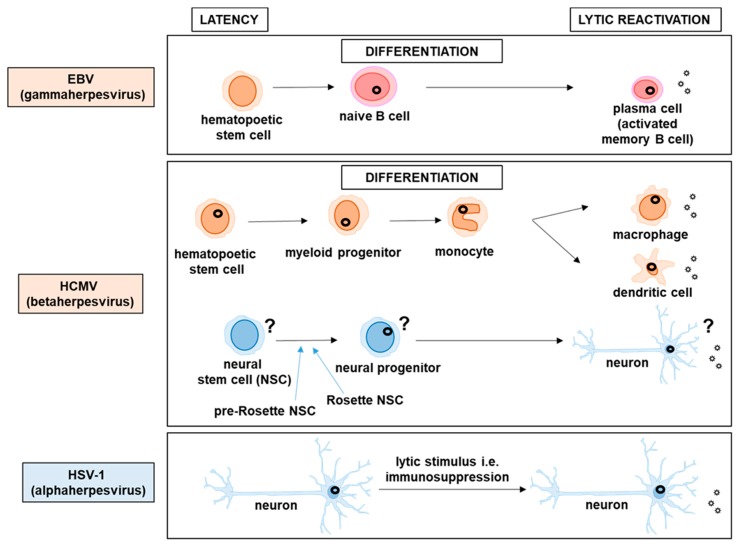Figure 1.
Latency establishment and lytic reactivation of herpesviruses. Following an initial lytic infection, herpesviruses establish latency mostly in dividing cells (except alphaherpesviruses), during which the viral genome is maintained as an episome and is tethered to cellular chromatin; lytic reactivation of gammaherpesviruses and betaherpesviruses may be cell differentiation dependent and occurs upon receiving the stimulus for terminal differentiation. EBV, a gammaherpesvirus, infects naïve B cells and remains latent throughout their differentiation until memory B cells carrying latent virus become activated and differentiate into plasma cells, which induces lytic reactivation. HCMV, a betaherpesvirus, establishes latency in cells of the myeloid lineage, its lytic cycle is activated upon differentiation into macrophages and dendritic cells. Additionally, HCMV can also establish latency in neural lineage and undergo lytic cycle in neurons, although the details of HCMV neural infection need to be studied further to resolve observed contradictions. In contrast HSV-1, an alphaherpesvirus establishes latency in sensory neurons and the lytic reactivation is induced upon receiving a specific stimulus. Viral genomes are symbolized by a black circle in the nucleus.

